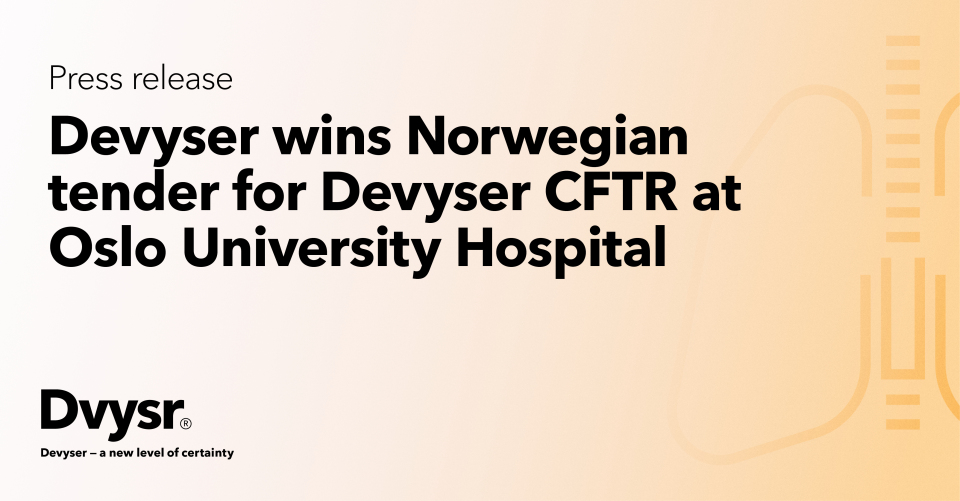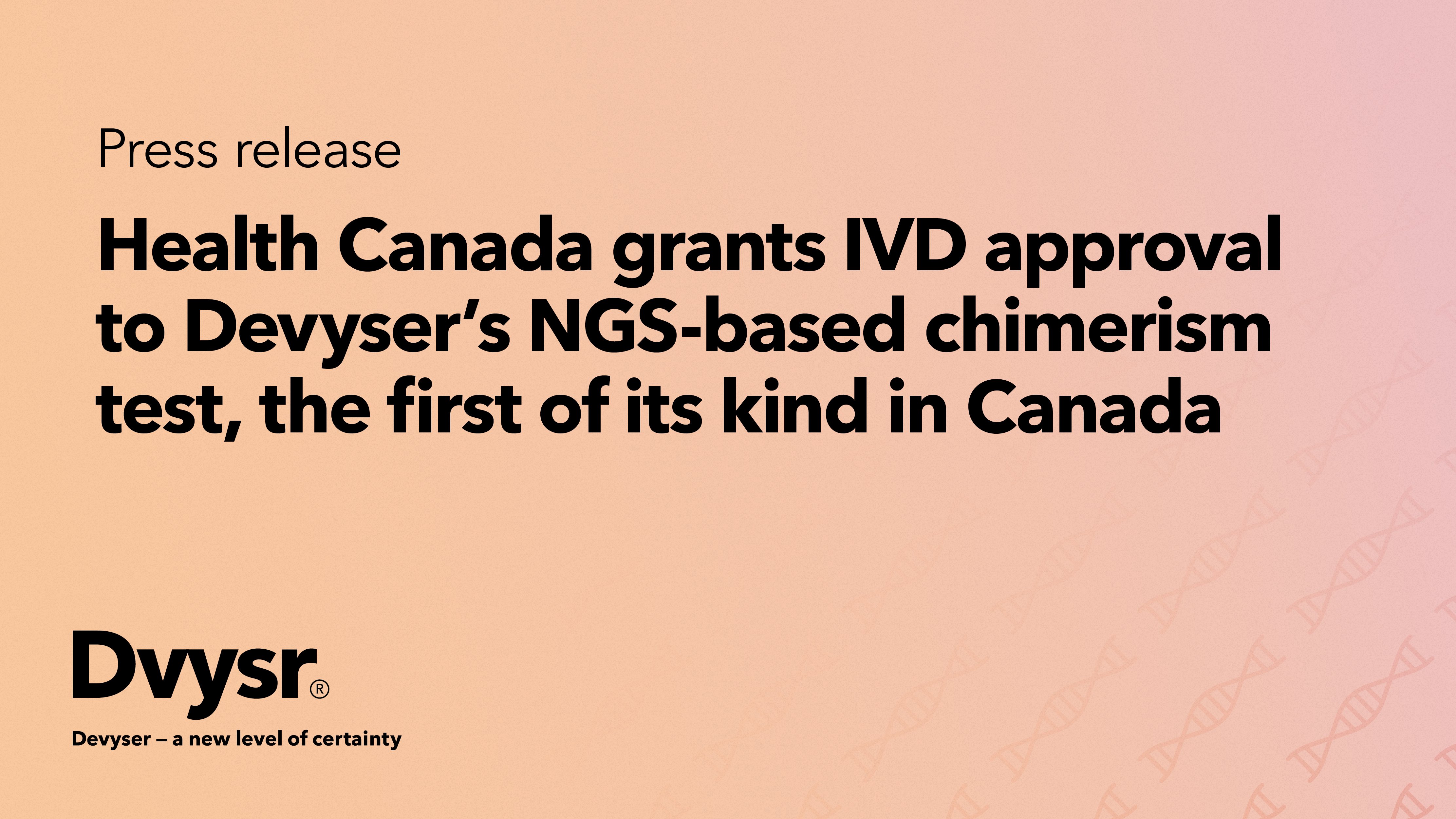Devyser wins Norwegian tender for Devyser CFTR at Oslo University Hospital
Devyser is proud to announce that the company has been awarded a tender by Oslo University Hospital...
Thalassemias
.png)
Thalassemias | August 15, 2024
Next-generation sequencing (NGS) is enhancing our understanding of genetic disorders, including thalassemia. Recent studies demonstrate the effectiveness of Devyser Thalassemia in identifying a wide range of genetic mutations associated with thalassemia, providing detailed genetic profiles, and improving diagnostics. In this blogpost we highlight some of the fascinating research using Devyser Thalassemia.
Atypical Interference in Hb A1c Measurements Might Be Due to Mosaic Expression of Hemoglobin Variants – Clinical Chemistry, 20241
Annelie Strålfors, Kristina Lagerstedt-Robinson, and Britta Landin (Sweden)
This letter describes two cases of atypical hemoglobin (Hb) variants interfering with Hb A1c measurements, potentially affecting diabetes treatment:
MPS provided higher sensitivity and identified low-level mosaicism not detected by Sanger sequencing, highlighting the importance of recognizing mosaic Hb variants to avoid misdiagnosis and ensure appropriate treatment.
Three Haemoglobin Variants for Congenital Erythrocytosis and Sickle Cell Disease HbSC – Biomedical Research & Environmental Sciences, 20222
Rita Testa Epifania, et al. (Italy)
This article presents three clinical cases of rare hemoglobinopathies in Italy, emphasizing the importance of accurate identification of rare thalassemia variants:
The study underscores the necessity of molecular genetic analysis for patients with high hematocrit levels when secondary causes are excluded, supporting the need for comprehensive genetic testing in diagnosing hemoglobinopathies.
Application of Targeted Next-Generation Sequencing for the Investigation of Thalassemia in a Developing Country: A Single Center Experience – Diagnostics, 20233
Razan Hayati Zulkeflee, et al. (Malaysia)
This study demonstrates the effectiveness of Devyser Thalassemia in identifying genetic variants missed by traditional methods:
The research highlights the advantages of using targeted NGS over traditional methods for thalassemia diagnosis, particularly in developing countries with limited resources. The findings support the implementation of NGS in routine clinical practice to improve patient care and genetic counseling.
Biallelic hypomorphic variants in CAD cause uridine-responsive macrocytic anemia with elevated haemoglobin-A2 – British Journal of Haematology, 20234
Orna Steinberg-Shemer, et al. (Israel, Spain)
This study explores the genetic basis of macrocytic anemia linked to biallelic hypomorphic variants in the CAD gene:
The study highlights the limitations of current functional assays and in silico prediction tools, suggesting CAD gene sequencing for patients with similar hematological phenotypes to ensure accurate diagnosis and treatment.
Context Base Editing for Splice Correction of IVSI-110 β-Thalassemia – Molecular Therapy. Nucleic Acids, 20245
Basma Naiisseh, et al. (Cyprus)
This article focuses on using adenine base editors (ABEs) to correct the IVSI-110 (G>A) splice mutation in β-thalassemia:
The study supports using ABEs as a safer, more efficient alternative to traditional genome-editing methods for treating β-thalassemia.
Detection of 13 Novel Variants and Investigation of Mutation Distribution by Next Generation Sequencing in Hemoglobinopathies: A Single Center Experience – Indian Journal of Hematolofy & Blood Transfusion, 20236
Ozge Ozalp and Ozlem Anlas (Turkey)
This study examines the effectiveness of NGS in identifying genetic mutations in hemoglobinopathies:
The study explores the advantages of NGS over traditional methods in identifying genetic mutations in hemoglobinopathies. NGS offers a comprehensive, cost-effective approach for precise and early diagnosis, improving patient outcomes.
Conclusion
As we continue to explore and refine these technologies, the future of thalassemia research and treatment is promising. The insights gained from these studies raise the importance of adopting advanced genetic testing methods to stay at the forefront of medical research and patient care.
References
1. Strålfors A, Lagerstedt-Robinson K, Landin B. Atypical Interference in Hb A1c Measurements Might Be Due to Mosaic Expression of Hemoglobin Variants. Clin Chem. Published online July 3, 2024. doi:10.1093/clinchem/hvae091

Devyser is proud to announce that the company has been awarded a tender by Oslo University Hospital...
Read More

Devyser, a leading provider of advanced genetic testing solutions, has been awarded a new tender in...
Read More

Devyser is proud to announce that One Lambda Devyser Chimerism and Advyser Chimerism have been...
Read More

Devyser today announced that the Centers for Medicare & Medicaid Services (CMS) has issued its...
Read More